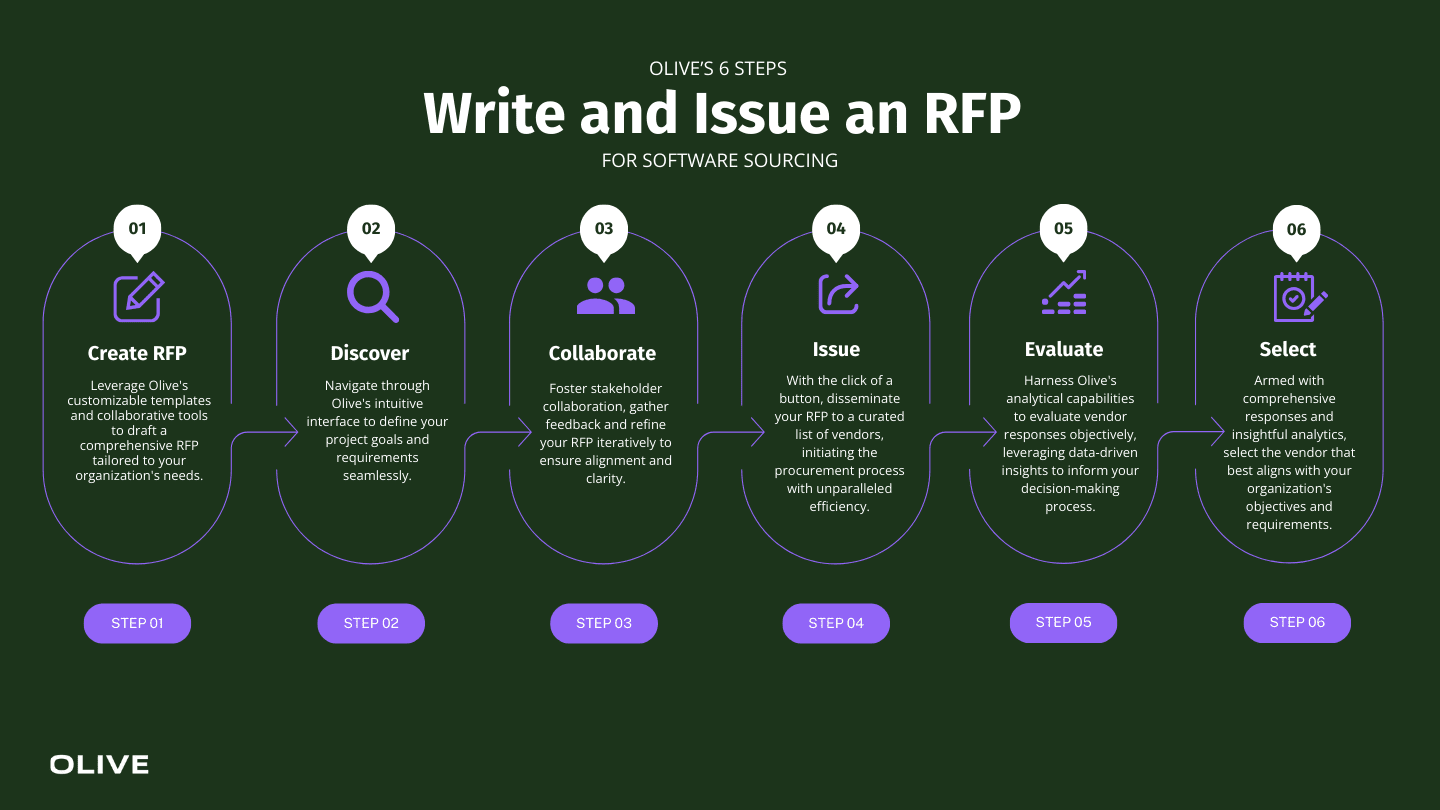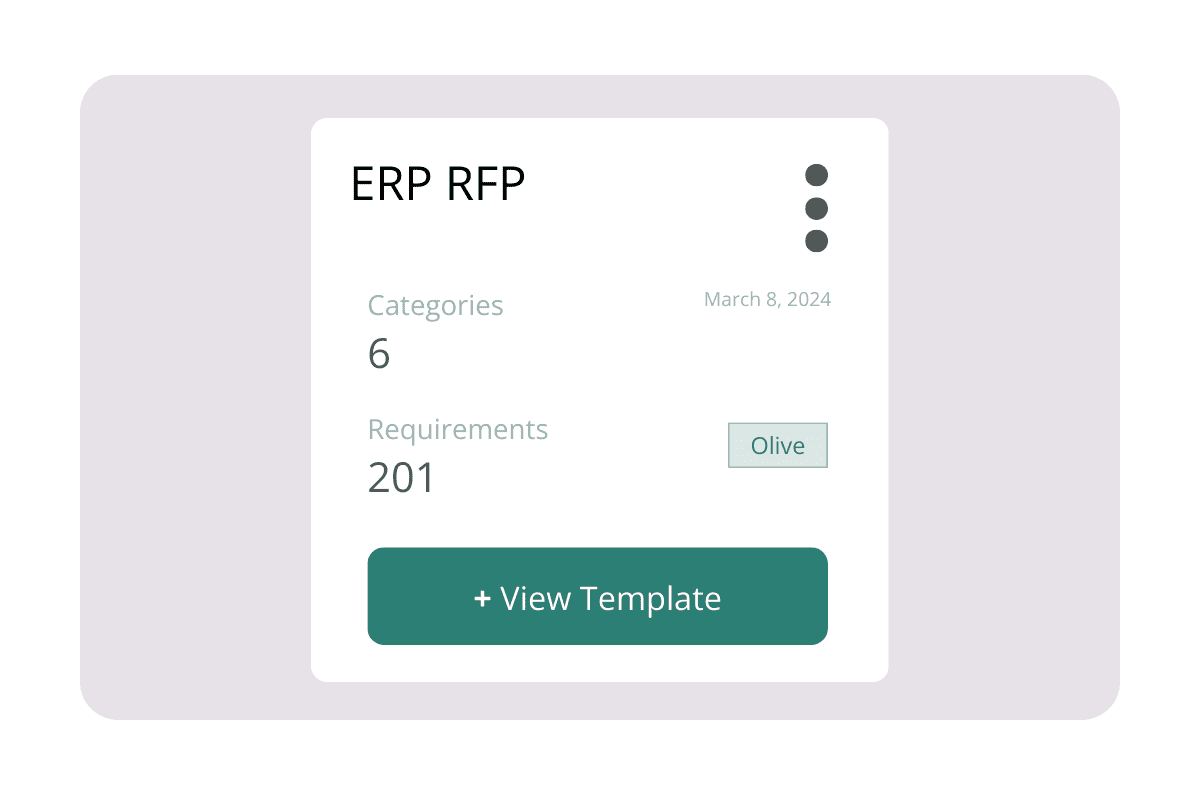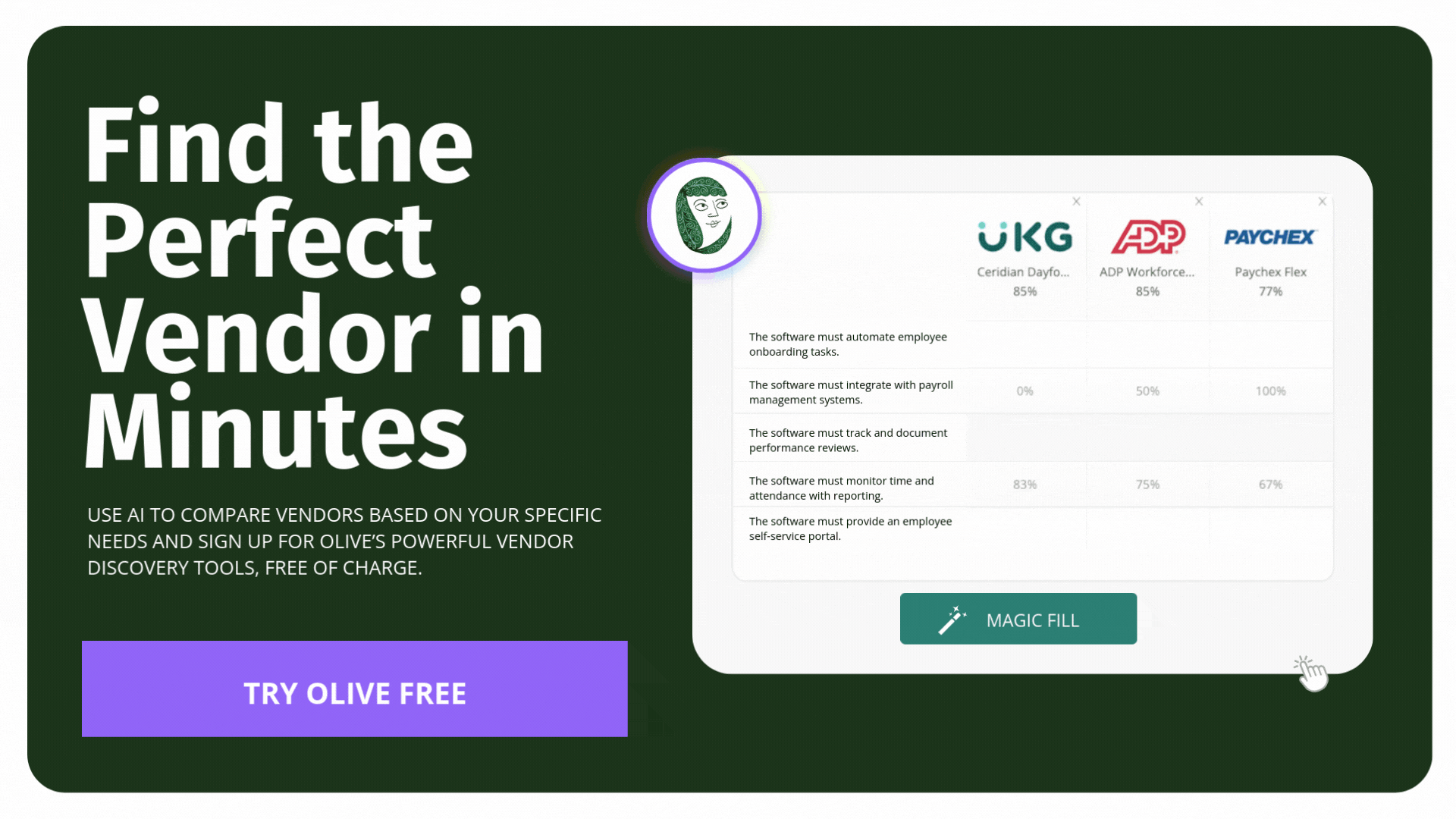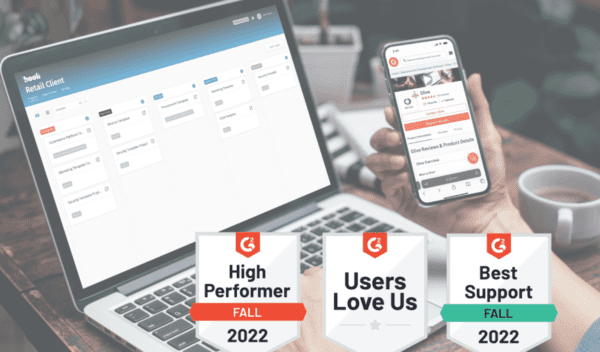Craft Response-worthy RFPs for Software and Tech Procurement
Why Write an RFP?
The significance of crafting effective Request for Proposals (RFPs) cannot be overstated, especially when it comes to sourcing the most suitable vendors for your organization’s software needs. Many companies require an RFP for software or purchases over a certain amount, recognizing the importance of thorough vendor evaluation and selection.
At the core of this process lies the challenge of eliciting responses and ensuring that these responses align closely with your organization’s requirements and objectives. Writing an RFP that gets a response increases your organization’s chances of securing the software and technology vendors that best fit its needs.
Additionally, failure to craft a thorough RFP introduces the risk of misalignment between vendor offerings and organizational needs, potentially leading to costly procurement mistakes and suboptimal software solutions. Mastering the art of crafting a comprehensive RFP can serve as a powerful antidote, mitigating the risks associated with procurement oversights and ensuring alignment between organizational needs and vendor solutions. Moreover, investing in the RFP process can yield significant returns on investment (ROI) by facilitating informed decision-making, negotiating better terms, and ultimately achieving optimal value for the organization.
What is an RFP?
In the intricate web of software and technology procurement, an RFP stands as a beacon guiding organizations through the labyrinth of vendor selection.
Picture this: You’re an IT leader tasked with the responsibility of spearheading a crucial software acquisition initiative. An RFP serves as your compass, navigating you through the vast sea of vendors, solutions, and intricacies inherent to the software landscape. It’s your tool for articulating precise requirements, soliciting comprehensive proposals, and ultimately making informed IT decisions that propel your organization forward.
Understanding the RFP Process
Yet, amidst the undeniable significance of RFPs, organizations often find themselves grappling with a myriad of challenges when adhering to traditional RFP methods. The labyrinthine nature of the procurement process, compounded by the complexities of software evaluation and vendor comparison, often leads to inefficiencies and frustrations.
Mastering the art of crafting a comprehensive RFP can serve as a powerful antidote, mitigating the risks associated with procurement oversights and ensuring alignment between organizational needs and vendor solutions.
How to Write an RFP That Will Get a Response
Embarking on the journey of crafting an RFP for technology and software purchases requires meticulous planning and execution.
1. Define Your Project and Needs
Before penning down a single word of your RFP, it’s imperative to delineate your project’s scope, objectives, and requirements. Before drafting your RFP, it’s crucial to clearly define the scope, objectives, and requirements of your project. Start by identifying the problem or need that the software solution will address. Outline specific requirements and functionalities essential for achieving your project goals, considering factors like features, integration needs, scalability, and budgetary constraints.
2. Write an Introduction
Your RFP’s introduction sets the stage for vendor engagement, offering a glimpse into your organization’s objectives and the challenges it seeks to overcome. The introduction of your RFP sets the stage for vendor engagement. Provide a concise overview of your organization and the project at hand. Clearly state the purpose of issuing the RFP and the objectives you aim to achieve by selecting a software vendor. Highlight any challenges or pain points your organization faces that the software solution will address.
3. Explain Your Company’s and Project’s History
A brief yet insightful overview of your company’s history and the project at hand can serve as a catalyst for vendor interest and engagement. Give a brief background of your organization, including its mission, values, and industry presence. Outline the history of the project, including any previous attempts to address the problem or implement similar solutions. Highlight key milestones or achievements related to the project to demonstrate your organization’s commitment to its success.
4. Describe Your Project’s Requirements
Detailing your project’s requirements forms the cornerstone of your RFP, laying the groundwork for vendor proposals and evaluations. Detail the specific requirements and functionalities the software solution must fulfill to meet your organization’s needs. Then break down the requirements into categories such as technical specifications, functional capabilities, security requirements, and user experience expectations. Include any specific preferences or constraints related to the software solution.
5. Explain How Vendors Should Respond
Clarity and consistency are paramount when outlining the structure for vendor responses. Provide clear instructions to vendors on how to structure and format their responses to the RFP. Define the required sections, headings, and content that vendors should include in their proposals. Specify any supporting documents or materials vendors need to submit along with their responses.
6. Outline Your Selection Criteria
Transparent and well-defined selection criteria pave the way for informed decision-making and vendor selection. Define the criteria and metrics you will use to evaluate and compare vendor proposals. Prioritize the selection criteria based on their importance to your organization’s objectives and project success. Next, include both essential prerequisites and preferred qualifications that vendors should demonstrate in their responses.
7. Note Your Timelines
Timeliness is of the essence in the realm of RFPs, with deadlines and milestones guiding the procurement journey. Next, establish clear timelines and deadlines for each stage of the RFP process, from issuance to vendor selection. Next, communicate key milestones, such as the deadline for submitting proposals, the date for announcing the selected vendor, and the project start date. Allow sufficient time for vendors to prepare and submit their proposals.
8. Proofread and Revise Your RFP
The devil lies in the details, and proofreading serves as the final safeguard against oversight and errors. Now you must conduct a thorough proofreading of your RFP to identify and correct any errors or inconsistencies in grammar, spelling, or formatting. Review the content for clarity, coherence, and relevance to ensure it effectively communicates your organization’s needs and expectations. Solicit feedback from stakeholders and colleagues involved in the project. Utilize collaborative features to streamline the review process.
The Olive Approach to Writing an RFP
At the heart of Olive’s innovative solution lies a commitment to simplifying and streamlining the RFP writing process for software purchases. Leveraging cutting-edge technology and intuitive design, Olive empowers organizations to transcend the constraints of traditional RFP methods and embrace a future-driven approach to software procurement. With Olive’s user-friendly platform at your disposal, crafting an RFP becomes an intuitive and efficient endeavour.

1. Create RFP
Leverage Olive’s customizable templates and collaborative tools to draft a comprehensive RFP tailored to your organization’s needs.
2. Discover
Navigate through Olive’s intuitive interface to define your project goals and requirements seamlessly.
3. Collaborate
Foster stakeholder collaboration, gather feedback and refine your RFP iteratively to ensure alignment and clarity.
4. Issue
With the click of a button, disseminate your RFP to a curated list of vendors, initiating the procurement process with unparalleled efficiency.
5. Evaluate
Harness Olive’s analytical capabilities to evaluate vendor responses objectively, leveraging data-driven insights to inform your decision-making process.
6. Select
Armed with comprehensive proposals and insightful analytics, select the vendor that best aligns with your organization’s objectives and requirements.
Benefits of Using Olive for RFP Writing
Time Savings
Streamline the RFP creation process, minimize administrative overhead, and accelerate vendor selection with Olive’s intuitive platform.
Collaborative Excellence
Foster collaboration among stakeholders, solicit feedback, and refine RFPs iteratively to ensure alignment and consensus.
Data-Driven Decision Making
Leverage Olive’s analytical capabilities to evaluate vendor responses objectively, empowering informed decision-making and vendor selection.
Unbiased Evaluations
Ensure fairness and impartiality in vendor evaluations with Olive’s AI-powered recommendations and data-driven insights, mitigating bias and subjectivity.
Olive RFP Case Study and Examples
Real-world examples speak volumes about the efficacy of Olive’s solution in transforming the software procurement landscape. Explore case studies and testimonials from organizations that have harnessed Olive’s platform to revolutionize their RFP writing and vendor selection processes.
Write RFPs with Olive
In the dynamic realm of software procurement, the ability to craft compelling RFPs that resonate with vendors and drive informed decision-making is paramount. With Olive’s innovative platform, organizations can transcend the constraints of traditional RFP methods and embrace a future-driven approach to software procurement. By leveraging intuitive UX, collaborative tools, and AI-powered insights, Olive empowers organizations to streamline the RFP writing process, expedite vendor selection, and drive transformative outcomes.
Revolutionize Your Software Procurement Journey
Take the first step towards streamlined RFP writing and vendor selection with Olive. Book a demo and start writing your RFP now. Invite stakeholders, iterate on requirements, issue your RFP to vendors, and find best-fit software for your organization. Unlock the power of Olive and embark on a transformative journey toward software procurement excellence!








